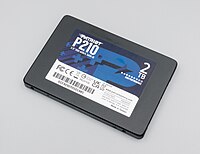
Photo from wikipedia
Abstract An inverse heat conduction method was used to determine the energy balance at the cutting zone in edge trimming of carbon fiber-reinforced polymer composites. Three-dimensional transient heat conduction problem… Click to show full abstract
Abstract An inverse heat conduction method was used to determine the energy balance at the cutting zone in edge trimming of carbon fiber-reinforced polymer composites. Three-dimensional transient heat conduction problem was modeled and solved independently in Abaqus for both the workpiece and cutting tool. Temperatures at specific locations were also measured during cutting using thermocouples and infrared thermography. Minimizing the difference between measured and calculated temperatures allowed the estimation of the heat flux applied in each problem. The total electric power consumed in machining was also measured. The heat partition was determined from the measured and calculated energies to be 0.07, 0.56 and 0.37 for the workpiece, tool and chips, respectively. The temperature distribution in the workpiece indicated that heat penetration is shallow due to poor thermal conductivity. It was also found that the extent of estimated machining thermal damage in the workpiece is within 0.35 mm below the machined surface.
Journal Title: Machining Science and Technology
Year Published: 2019
Link to full text (if available)
Share on Social Media: Sign Up to like & get
recommendations!